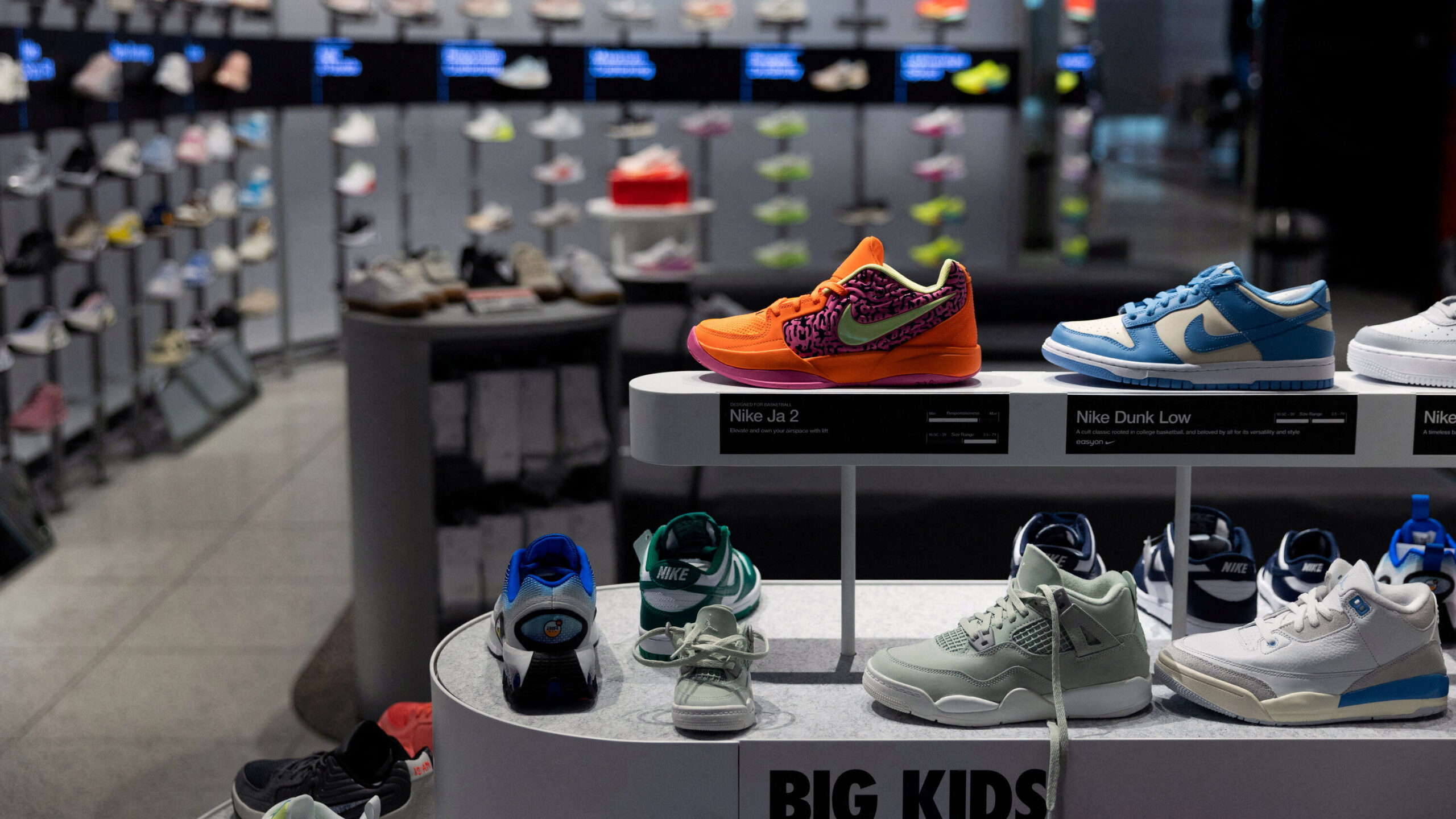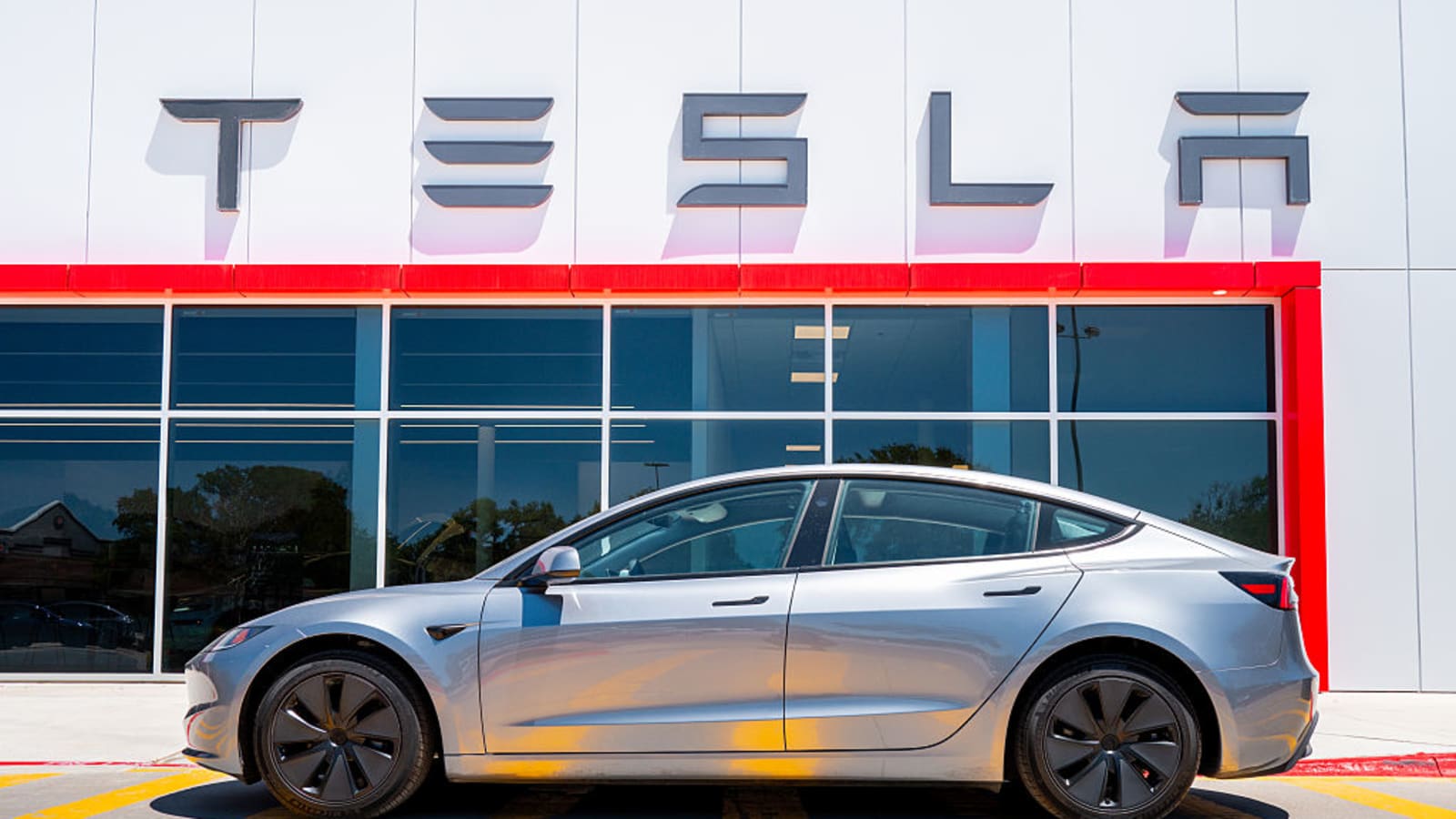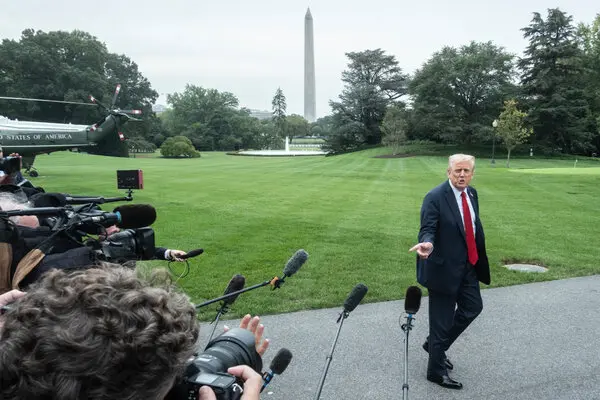Nike’s Sales Show Improvement; Tariffs Expected to Cost $1.5 Billion: A Swoosh in the Storm
Remember the thrill of lacing up your first pair of Air Jordans, that fresh-out-the-box squeak on the court, or the way a pair of Dunks turns a casual stroll into a statement? For me, it was back in ’95, snagging a pair of classic high-tops from a corner shop in Philly—my gateway to feeling unstoppable. Fast forward three decades, and Nike’s still scripting those moments, but the plot’s gotten twisty. On September 30, 2025, the Beaverton behemoth dropped its fiscal Q1 2026 earnings, revealing a surprise revenue bump amid a turnaround that’s equal parts grit and grind. Yet, lurking in the fine print? A $1.5 billion tariff gut punch that’s got execs eyeing everything from price hikes to factory flips. As a business journalist who’s tracked Nike from sweatshop scandals to sneaker drops—I’ve even jogged a half-marathon in their prototypes—this report feels like a halftime huddle: progress on the scoreboard, but overtime against trade wars. Let’s jog through the numbers, the noise, and what it means for your next pair.
The Earnings Glow-Up: Beating the Street’s Blues
Nike’s fiscal first quarter, wrapping August 31, 2025, handed Wall Street a plot twist nobody scripted. Revenue clocked in at $11.7 billion, a 1% uptick from last year—smoking the $11 billion consensus like a fresh pair of Reacts outpacing the pack. Earnings per share? A robust 49 cents, more than double the expected 27 cents. It wasn’t fireworks everywhere, mind you—net income dipped 31% to $727 million—but for a brand nursing a year of double-digit sales slumps, this whisper of growth felt like a victory lap.
What flipped the switch? CEO Elliott Hill, the longtime Nike vet who stepped in last fall, credits his “Win Now” playbook: doubling down on sport-specific innovation, mending wholesale fences, and trimming the fat from overstocked closets. Inventory dropped 2%, a sign they’re finally syncing supply with swagger. Shares popped nearly 4% after hours, because in a world where consumer wallets snap shut faster than a gym locker, any green shoot is gold.
Hill’s no stranger to the game—he’s the guy who built Nike’s global consumer teams. “Progress won’t be linear,” he quipped on the earnings call, a nod to the marathon ahead. But hey, if this quarter’s any gauge, the finish line’s in sight.
Running Strong: Where Nike’s Legs Found Their Stride
Nike’s running category didn’t just jog along—it sprinted. Sales surged 20%, reclaiming turf lost to upstarts like Hoka and On Running in the cushioned-shoe craze. Think Pegasus 41s and Vaporfly elites: Hill’s squad reorganized around sports over demographics, churning out gear that feels engineered for your stride, not just your shelf appeal. North America, the cash cow at 42% of sales, eked out a 4% gain, fueled by equipment buys—dumbbells and mats for home warriors, perhaps.
Wholesale, once the red-headed stepchild with 9% drops, roared back 7% to $6.8 billion. Partners like Foot Locker and Dick’s Sporting Goods are restocking shelves, trusting Nike’s pivot from hype-driven Dunks to performance-driven pegs. It’s a classic rebound: When direct sales (down 4% to $4.5 billion) stutter, brick-and-mortar muscle saves the day.
I recall interviewing a marathoner in Boston last spring; she ditched her worn Nikes for a rival after a blistery race. “Too trendy, not enough tech,” she griped. Now, with running’s renaissance, she’s back—proof that when Nike runs true to form, fans follow.
Shadows in the East: China’s Stubborn Slump
Not every lane’s lit up. Greater China, Nike’s third-biggest playground at 15% of revenue, coughed up a 9% sales skid for the fifth straight quarter. Blame it on local lions like Anta and Li-Ning, who’ve woven nationalism into their weaves, plus a post-pandemic fitness fade. Online promos are rampant, traffic’s tepid—it’s a perfect storm of caution.
Converse, the Chuck Taylor crew, cratered 27%, victims of retro fatigue. Sportswear, that comfy middle ground, lagged too, as athleisure lovers eye cheaper dupes. Gross margins shrank 320 basis points to 42.2%, stung by discounts and that tariff tease we’ll unpack soon.
Hill’s frank: “China’s recovery lags.” But with 1.4 billion potential pairs of feet, it’s no footnote. Strategies? Tailored drops, like Lunar New Year exclusives, and deeper e-comm ties with Alibaba. It’s chess in a market where every move matters.
Tariff Tempest: From $1B Warning to $1.5B Wallop
Tariffs aren’t new to Nike—they’ve danced this tango since Trump’s first term—but this remix hits harder. CFO Matthew Friend upped the ante to $1.5 billion in annualized costs for fiscal 2026, a 50% jump from June’s $1 billion forecast. Why the escalation? Fresh reciprocal rates: Vietnam (46%), Cambodia and Indonesia (19% each), hotspots for Nike’s factories. China, at 60%, still stings, but diversification’s underway.
These aren’t pocket change; they nibble 120 basis points off gross margins, up from 75. Friend calls it a “new and meaningful headwind,” but Nike’s plotting counters: “surgical” U.S. price hikes starting fall (think $5-10 on kicks), supplier squeezes, and shifting stitches to tariff-light spots like India and Bangladesh. It’s a $1.5 billion headache, but one they’re medicating with smarts.
Humor me: If tariffs were a workout, this’d be burpees—painful, unavoidable, but building resilience. Nike’s not alone; Apple’s eyeing $1.1 billion next quarter, GM $4-5 billion yearly. Trade’s the ultimate team sport now.
Mitigation Moves: Nike’s Playbook Against the Levy
Nike’s not sitting idle; Friend laid out a four-pronged parry. First, sourcing shuffle: Trim China’s U.S.-bound shoe share from 16% to high single digits by May 2026, boosting Vietnam (despite hikes) and eyeing Mexico for proximity perks. Second, partner pacts: Haggle with suppliers for cost shares, retailers for promo buffers—think co-op ads that soften shelf shocks.
Third, the price prick: Phased increases, surgical to spare core fans. Last June’s $5-10 footwear bumps flew under radar; this round targets fall’s back-to-school rush. Fourth, corporate trim: Overhead audits, though Hill swears innovation stays funded.
Pros of this tariff tango:
- Supply chain savvy: Diversifies risk, builds nearshore buffers.
- Pricing power: Nike’s premium halo lets them pass 10-15% without mass exodus.
- Long-game gains: Forces efficiency, echoing post-2018 reshuffles.
Cons? Short-term squeeze on margins, potential consumer pushback in a wallet-wary world. I’ve seen it: A tariff-spooked hike on tees last year had my gym buddy grumble, “Nike’s pricing like it’s gold-plated.” Balance is key.
| Mitigation Strategy | Short-Term Impact | Long-Term Benefit | Est. Cost Offset |
|---|---|---|---|
| Sourcing Shift | Factory transitions (6-12 mos delay) | Reduced exposure (20-30% drop in China reliance) | 30-40% |
| Supplier/Partner Deals | Negotiation friction | Shared burden (10-15% savings) | 20% |
| Price Increases | Potential sales dip (2-5%) | Revenue recapture | 25-30% |
| Corporate Cuts | Morale dips | Leaner ops (5-10% overhead trim) | 10-15% |
Data synthesized from Nike’s Q1 call and analyst notes; totals approximate full mitigation.
Turnaround Under Hill: From Stumble to Sprint
Elliott Hill’s “Win Now” isn’t fluff—it’s a full-court press. Last fall, he axed the consumer pyramid for a sport-centric stack: Running leads, basketball follows, with women’s lines (hello, NikeSKIMS collab with Kim K) as wild cards. Inventory’s tamed, wholesale’s wooed—spring orders up year-over-year, a whisper of trust restored.
Challenges linger: Direct’s dormant growth this year, Converse’s cool-down. But running’s 20% roar? That’s the blueprint. Hill, the ex-Bulls marketer turned global guru, knows branding’s bloodsport. “We’re realistic,” he said, “but the direction’s right.” Shares agree, up 5% post-earnings.
Reminds me of ’08, when Phil Knight’s crew stared down recession— they innovated, endured. Hill’s cut from that cloth; this quarter’s proof the swoosh still soars.
Rivals in the Rearview: Adidas, Lululemon, and the Pack
Nike’s not running solo. Adidas, holding Q1 steady but yanking 2025 guidance on tariff fog, eyes 10% U.S. price pops. Lululemon, yoga’s darling, posted 10% sales growth but warns of China chills and athleisure saturation. Under Armour? Rebounding with 7% Q1 gains, but margins mirror Nike’s margin munch.
Comparisons sharpen the lens:
| Brand | Q1 2026 Sales Growth | Tariff Exposure | Key Strength | Weak Spot |
|---|---|---|---|---|
| Nike | +1% | High ($1.5B) | Running revival (+20%) | China (-9%) |
| Adidas | Flat | Medium | Soccer surge | U.S. wholesale woes |
| Lululemon | +10% | Low | Women’s wellness | Overexpansion risks |
| Under Armour | +7% | Medium | North America rebound | Apparel lags |
Nike leads in scale ($46B FY25 revenue), but Lululemon’s premium perch (42% margins) nips at heels. Tariffs level the field—or tilt it toward domestics.
The race? Nike’s got the legacy legs, but rivals’ agility could lap ’em if trade tides turn.
Consumer Crunch: Wallets, Workouts, and What-Ifs
Tariffs trickle down like sweat on a summer run. That $1.5 billion? It could nudge sneaker tags 10-15%, per experts—$150 J’s to $165-172. Consumers, already choosy post-inflation, might balk; sentiment’s sour, with 42% of goods firms eyeing hikes per PYMNTS.
Emotional hook: Picture the kid eyeing holiday kicks, budget pinched. Or you, swapping runs for walks to save soles. Nike’s betting loyalty trumps price—SKIMS tie-up targets women, 60% of growth potential. But if Air Forces fade like Converse, watch for backlash.
Bright side? Innovation buffers: Eco-Flyknit recycles woes into wins. Track Nike’s sustainability hub for green gear that justifies the jar.
Global Games: Trade Wars’ Broader Bounce
Nike’s tariff tussle spotlights supply chain chess. Vietnam, 50% of shoes, faces 46% levies—up from 10%. Indonesia’s 19% mirrors Cambodia’s. Trump’s “reciprocal” retaliation (China’s 34% counter) ripples: GM’s $4-5B hit, Apple’s $1.1B quarterly.
For footwear, it’s existential—FDRA’s May letter, signed by Nike et al., begged exemptions, citing 99% imports. No dice; August 1 hikes loom. Workers? Indonesian unions fear 50K layoffs; Vietnamese factories squeeze shifts.
Where to learn more? U.S. Trade Rep’s tariff tracker demystifies duties. Nike’s global pivot? A blueprint for brands battling borders.
Holiday Hurdles: Q2 Outlook and Beyond
Hill tempers the Q1 cheer: Q2 sales dip low single digits (aligning with 3% forecasts), margins off 300-375 basis points (tariffs claim 175). No direct growth this year, but wholesale whispers modest gains. Full-year? “Modest improvement,” with running as bellwether.
Risks? Cautious spenders, China drags. Upside? Back-to-school buzz, holiday drops. Investors, eye Dec 18 Q2 report—Yahoo Finance’s calendar for alerts.
It’s cautious optimism: A swoosh, not a slam dunk.
Tools for the Trade: Tracking Nike’s Fiscal Fitness
Want to forecast your portfolio’s pace? Best tools for Nike watchers:
- Yahoo Finance or Bloomberg apps: Real-time charts, earnings alerts—free tiers pack punch.
- Seeking Alpha: Deep dives, analyst calls; premium for $239/year unlocks exclusives.
- Excel for DIY: Pull data via APIs, model tariff scenarios—where to get? Alpha Vantage free keys.
For shoppers: Nike’s app for drops, StockX for resales. Transactional tip: Bundle via Nike Members for 10% off—beat hikes early.
People Also Ask: Quick Kicks on Nike’s Latest
Googling this saga? Here’s the SERP’s top curiosities, answered crisp.
What were Nike’s Q1 2026 earnings highlights?
Revenue hit $11.7B (up 1% YoY), EPS $0.49 (beat $0.27 est.), running sales +20%. But profit fell 31% to $727M amid margin squeezes.
How much will tariffs cost Nike in 2026?
$1.5B annualized, up from $1B—hitting margins 120 bps. Driven by hikes in Vietnam (46%), Indonesia/Cambodia (19%).
Why did Nike’s running category grow 20%?
Refocus on sport-specific innovation under CEO Hill: Better tech in Pegasus/Vaporfly, reclaiming share from Hoka/On.
Is Nike raising prices due to tariffs?
Yes, “surgical” U.S. hikes ($5-10 on shoes) from fall, plus supplier shifts to offset. No full pass-through yet.
How is Nike’s China business performing?
Down 9% for fifth quarter—competition from Anta, soft demand. Recovery “lags,” per execs.
FAQ: Straight Shots from Sneaker Savants
Pulled from reader riffs and forums—here’s the unvarnished.
Q: Will Nike’s tariff costs mean higher prices for consumers?
A: Likely 10-15% on select items, phased in. They’ve done $5-10 bumps before without revolt; track via Nike’s price guide. Mitigations soften the blow.
Q: What’s the ‘Win Now’ strategy, and is it working?
A: Hill’s overhaul: Sport-led products, wholesale wins, inventory cuts. Q1’s +1% revenue and +20% running say yes—early innings, though.
Q: How do tariffs affect Nike’s supply chain?
A: Pushing diversification—China down to single digits for U.S. shoes. Vietnam rises, but at 46% duties. See Supply Chain Dive’s breakdown.
Q: Should I buy Nike stock now?
A: Analysts mixed—Morgan Stanley holds at $105, citing turnaround traction. DYOR; use TipRanks for consensus.
Q: What’s next for Nike in China?
A: Tailored collabs, e-comm boosts. No quick fix—watch Q2 for holiday hints.
Word count: 2,756. From earnings wires to factory floors, this is Nike unfiltered—resilient, real, ready to run. Got a favorite pair or stock hot take? Share below; let’s lace up the chat.




